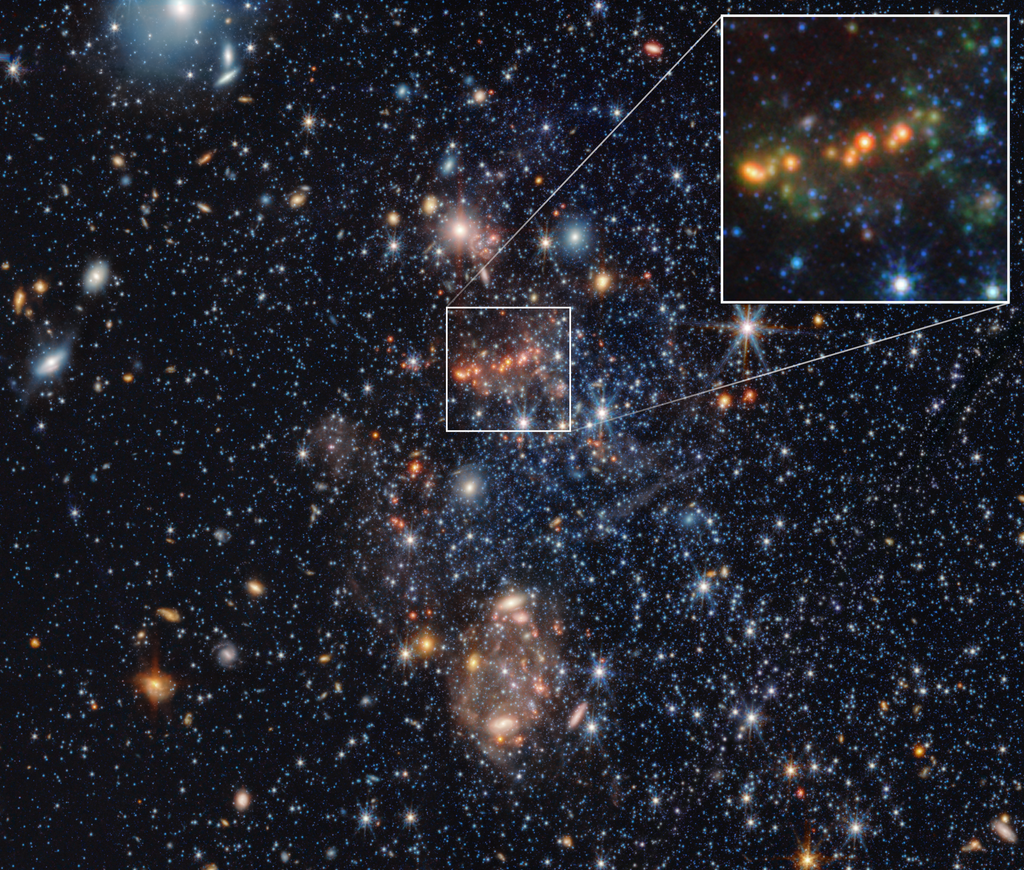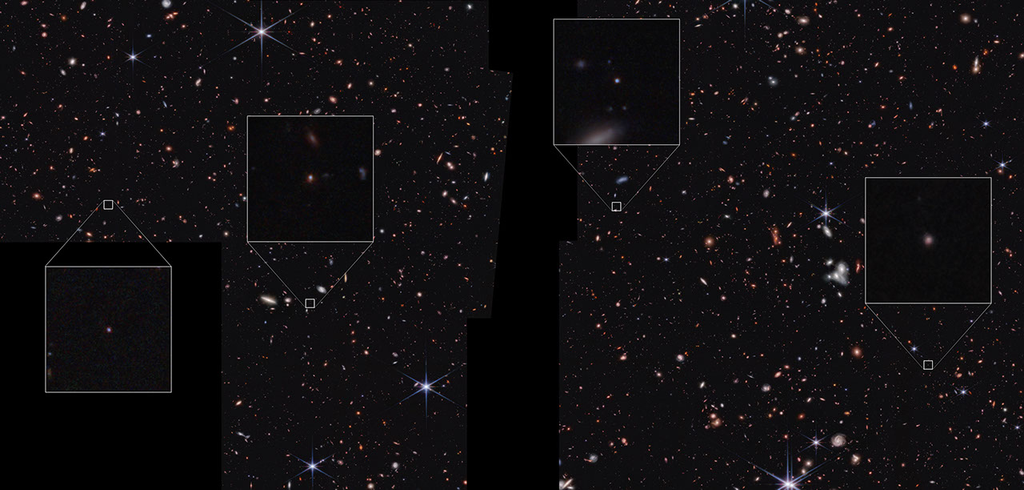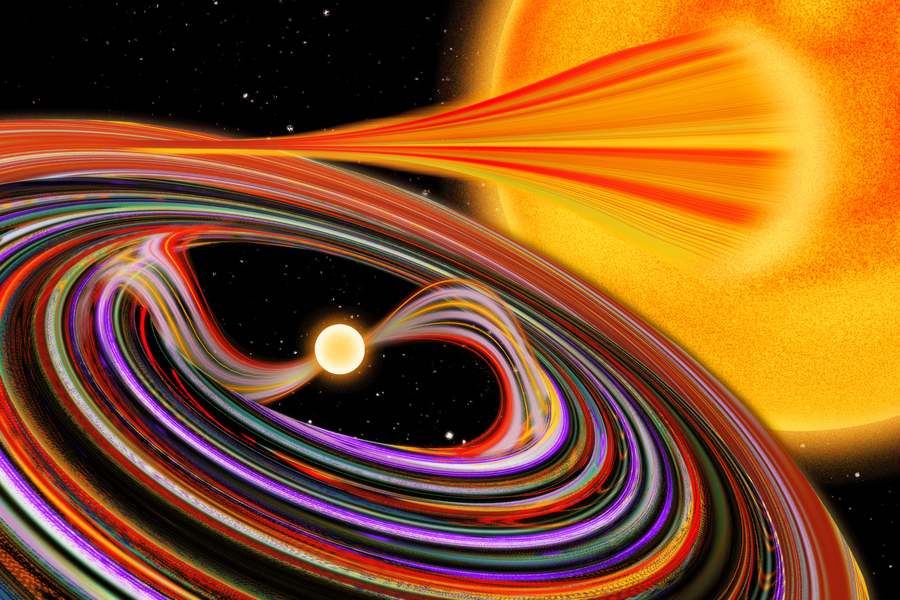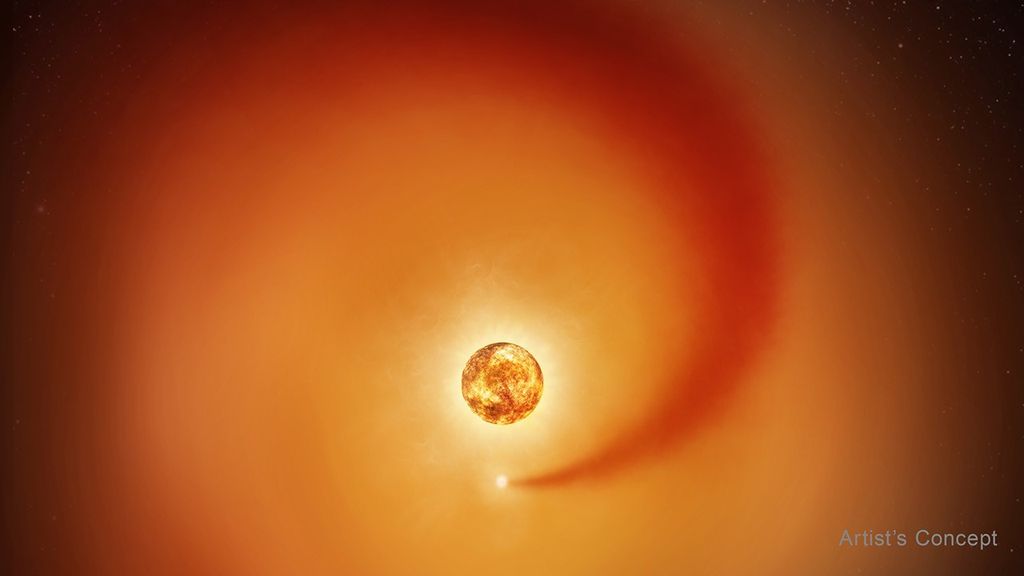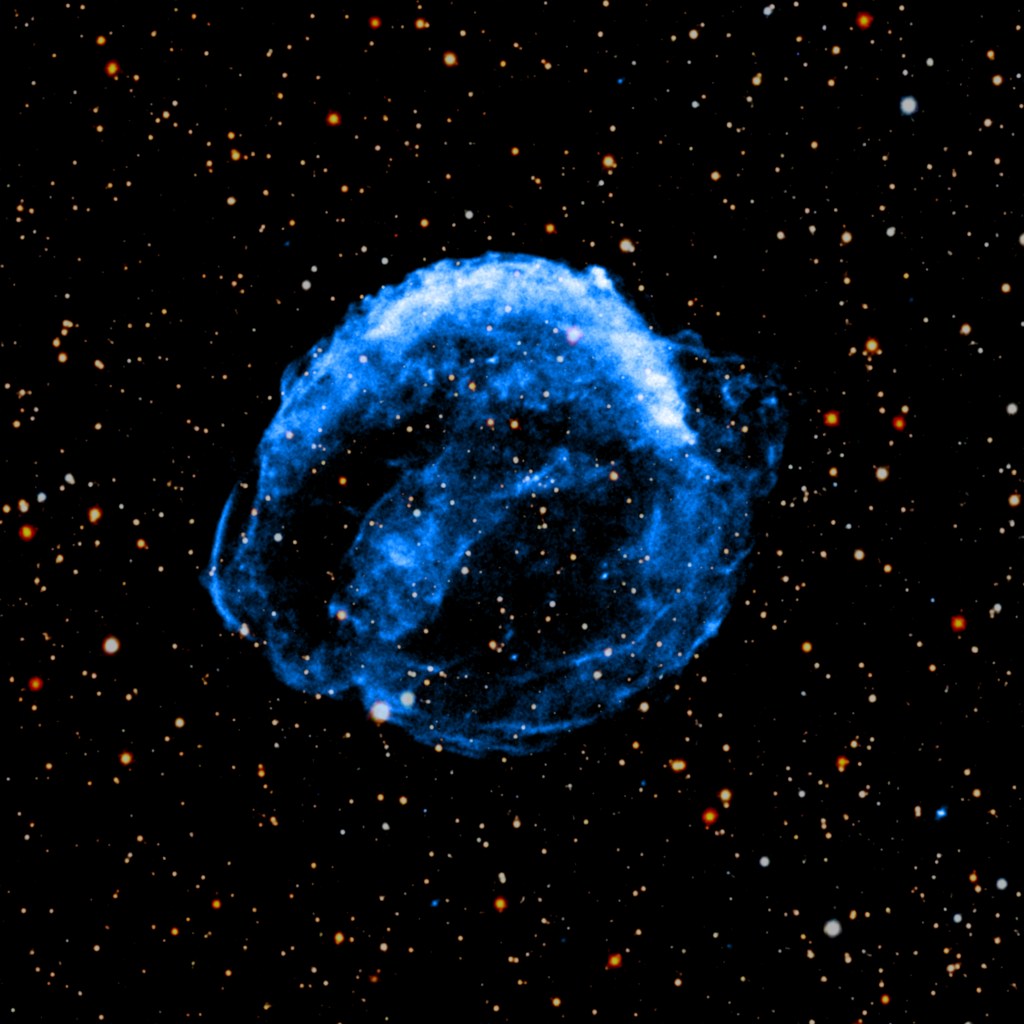1 min read
White Dwarf Migration in Globular Cluster 47 Tucanae (with title)

This diagram shows how white dwarfs, the burned-out relics of stars, are distributed in the ancient globular star cluster 47 Tucanae. The youngest white dwarfs are the hottest and bluest stars dwelling mostly in the cluster's core, where the most massive stars reside. Shortly before collapsing to become white dwarfs, the stars shed most of their mass. Now, as lightweight white dwarfs, they interact gravitationally with more massive stars in the core. Through these gravitational encounters, the white dwarfs rob enough speed from their more massive cousins to begin migrating slowly outward from their home. During their journey, they become older and cooler white dwarfs, depicted in the orange dots. Eventually, the white dwarfs settle on the outskirts of the cluster, where the oldest, coolest, reddest white dwarfs reside.
- Object NameObject NameA name or catalog number that astronomers use to identify an astronomical object.47 Tuc, 47 Tucanae, NGC 104
- Release DateMay 14, 2015
- Science ReleaseHubble Catches a Stellar Exodus in Action
- Credit
Related Images & Videos

White Dwarfs Migrating from Globular Cluster 47 Tucanae's Core
The heart of the giant globular star cluster 47 Tucanae in the Hubble Space Telescope image at left reveals the glow of 200,000 stars. The green box outlines the cluster's crowded core, where Hubble spied a parade of young white dwarfs starting their slow-paced 40-million-year...

White Dwarf Migration in Globular Cluster 47 Tucanae
This diagram shows how white dwarfs, the burned-out relics of stars, are distributed in the ancient globular star cluster 47 Tucanae. The youngest white dwarfs are the hottest and bluest stars dwelling mostly in the cluster's core, where the most massive stars reside. Shortly...
Share
Details
Last Updated
Aug 17, 2025
Contact
Media
Claire Andreoli
NASA’s Goddard Space Flight Center
Greenbelt, Maryland
claire.andreoli@nasa.gov

